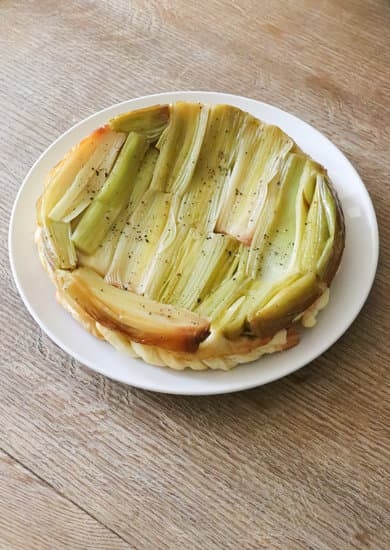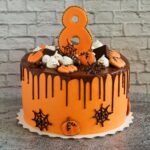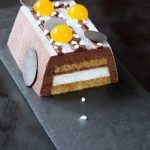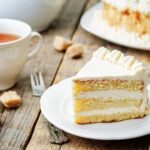When it comes to decorating cakes, choosing the right icing can make all the difference. The keyword: what icing is best for decorating cakes is a common query among bakers looking to create beautiful and delicious creations. Understanding the different types of cake icing available is essential to achieve the desired effect on your baked goods.
From classic buttercream to versatile fondant and flavorful cream cheese, there are numerous options to consider when selecting the perfect icing for your cake decorating project. Each type of icing offers unique characteristics in terms of texture, taste, and ease of use, allowing you to customize your creations according to your preferences and needs.
In this article, we will delve into various types of cake icings, including buttercream, fondant, cream cheese, royal icing, and ganache. We will explore their individual qualities and uses in cake decorating to help you make an informed decision when selecting the best icing for your next baking endeavor.
Whether you’re aiming for intricate designs or a simple yet elegant finish, understanding the differences between these icings will guide you towards creating show-stopping cakes that not only look amazing but taste incredible too.
The Importance of Choosing the Right Icing for Your Cake
Choosing the right icing for your cake is a crucial decision that can significantly impact the overall look and taste of your creation. Different types of icing offer unique characteristics that can enhance or detract from the design and flavor of your cake. Therefore, it is essential to understand the various options available and choose the one that best suits your needs.
One important factor to consider when selecting an icing is the texture you desire for your cake. Buttercream icing, for example, is soft and creamy, making it perfect for smooth finishes or intricate piping designs. On the other hand, fondant icing provides a smooth and firm surface that allows for detailed decorations and sculpting.
Another key consideration when choosing an icing is taste. Cream cheese icing offers a tangy flavor that pairs well with a variety of cake flavors, while ganache provides a rich and decadent taste that adds sophistication to any dessert. Royal icing, on the other hand, has a sweet flavor that hardens quickly, making it ideal for intricate designs that require precision.
In addition to texture and taste, ease of use is also important to consider when selecting an icing for your cake decorating needs. Some icings require more skill and technique to work with, such as royal icing which dries quickly and must be used immediately after preparation.
On the other hand, buttercream icing is more forgiving and easier to work with, making it a popular choice for both beginner and experienced decorators alike. Ultimately, choosing the best icing for your cake comes down to personal preference and the specific design you want to achieve.
Buttercream Icing
Types of Buttercream Icing
There are several types of buttercream icing, including American buttercream, Swiss meringue buttercream, Italian meringue buttercream, and French buttercream. American buttercream is the simplest to make, using just butter and powdered sugar for a sweet frosting. Swiss meringue buttercream involves heating egg whites and sugar over a double boiler before whipping them into peaks with softened butter.
Italian meringue buttercream adds a hot sugar syrup to beaten egg whites before incorporating the softened butter. French buttercream uses egg yolks for a rich and velvety texture.
Benefits of Using Buttercream Icing
Buttercream icing is not only easy to work with but also has a delicious flavor that pairs well with most cake flavors. Its smooth consistency allows for piping intricate designs or smooth finishes on cakes. Additionally, buttercream can be easily flavored with extracts, citrus zest, or cocoa powder to create various taste profiles for your cakes. Whether you’re looking to create simple swirls or intricate floral designs on your cakes, buttercream icing can provide the perfect finish every time.
Fondant Icing
What Is Fondant Icing?
Fondant icing is a versatile and popular choice for decorating cakes, known for its smooth and sleek finish. It is made from sugar, water, and gelatin, creating a pliable dough-like consistency that can be rolled out and draped over cakes for a seamless look. Fondant provides a clean canvas for intricate cake designs and decorations, making it a favorite among professional bakers and cake decorators.
Advantages of Using Fondant Icing
One of the main advantages of fondant icing is its ability to create sharp edges and smooth surfaces on cakes. This makes it ideal for intricate designs such as sculpted cakes or geometric patterns. Fondant also offers great stability, making it suitable for tiered cakes and cakes with complex structures. Additionally, fondant comes in a variety of colors and can be flavored to complement the cake it covers.
Decorating Tips for Working With Fondant Icing
When sculpting shapes or figures out of fondant, keep your tools and work surface lightly dusted with powdered sugar or cornstarch to prevent sticking. Experiment with different techniques like embossing, painting, or using molds to create unique designs with fondant icing on your cakes.
Cream Cheese Icing
One of the main advantages of using cream cheese icing for cake decorating is its ability to complement a wide range of cake flavors. Whether you are baking a classic carrot cake, a red velvet cake, or a simple vanilla cake, cream cheese icing adds a delicious twist that pairs well with each of these flavors.
Additionally, the slight tanginess of the cream cheese helps balance out the sweetness of the cake, creating a well-rounded taste experience for anyone enjoying your creation.
When comparing cream cheese icing to other popular choices such as buttercream or fondant, it’s important to consider not only taste but also texture and ease of use. Cream cheese icing tends to be softer than traditional buttercream but firmer than whipped cream frosting, making it ideal for piping borders, swirls, and other intricate decorations. Its smooth consistency makes it easy to spread evenly on cakes, creating a flawless finish that looks as good as it tastes.
| Advantages | Considerations |
|---|---|
| Versatile in flavor options | Sensitive to heat and humidity |
| Complements various cake flavors | May require refrigeration due to dairy content |
Royal Icing
One of the main advantages of using royal icing is its ability to hold its shape well, making it ideal for intricate piped designs such as lace patterns, flowers, or lettering. Its quick-drying properties also ensure that decorations set firmly in place once applied to the cake. Additionally, royal icing can be easily colored with food dye to achieve vibrant hues for your designs.
When working with royal icing, it is essential to pay attention to the consistency of the icing. Different consistencies are required for various decorating techniques, such as outlining, flooding, or adding fine details. By adjusting the amount of water added to the icing, decorators can achieve the desired thickness for their specific design needs. Overall, royal icing is a versatile option that allows for creativity and precision in cake decorating projects.
| Key Point | Information |
|---|---|
| Ingredients | Powdered sugar, egg whites, lemon juice or cream of tartar |
| Advantages | Holds shape well, dries hard and smooth |
| Consistency | Can be adjusted for different decorating techniques |
Ganache
There are two main types of ganache: dark chocolate ganache and white chocolate ganache. Dark chocolate ganache has a deeper flavor profile with a hint of bitterness, while white chocolate ganache offers a sweeter taste that pairs well with fruity flavors like berries or citrus. Both types of ganache can be adjusted in consistency by varying the ratio of chocolate to cream, allowing for a range of decorating possibilities.
When working with ganache, it is important to pay attention to the temperature for the best results. Ganache should be allowed to cool slightly before pouring over your cake for a drip effect or spreading as a smooth coating.
If it becomes too thick, gently heat it up in short bursts in the microwave or over a double boiler until it reaches the desired consistency. With its velvety texture and sophisticated finish, ganache is truly one of the best icings for decorating cakes when you want to achieve an elegant look.
- Dark chocolate ganache offers a rich and intense flavor profile
- White chocolate ganache adds sweetness and complements fruity flavors
- Adjusting the ratio of chocolate to cream allows for different consistencies
Comparing Different Icings Based on Texture, Taste, and Ease of Use
When it comes to decorating cakes, choosing the right icing can make all the difference. Different types of icing offer varying textures, tastes, and levels of ease when it comes to decorating your baked creations. Here is a breakdown of some common icings used for cake decoration:
- Buttercream Icing: Buttercream is a classic choice for cake decorating due to its smooth texture and versatility. It is easy to work with and can be flavored in a variety of ways, making it a popular option for both beginner and experienced bakers.
- Fondant Icing: Fondant is known for its ability to create intricate designs and smooth finishes on cakes. While it may take some practice to work with fondant effectively, the results can be stunning and professional-looking.
- Cream Cheese Icing: Cream cheese icing adds a tangy flavor that pairs well with a variety of cake flavors. It is ideal for adding richness and depth to your cakes while still offering a creamy texture that is easy to spread and work with.
Each type of icing has its own unique qualities that make it suitable for different cake decorating needs. Whether you are looking for a rich and glossy finish like ganache or intricate detailing like royal icing, understanding the differences in texture, taste, and ease of use can help you choose the best icing for your specific cake decorating project. Ultimately, experimenting with different icings will help you find the perfect match for your creative vision.
- Consider the overall design aesthetic you want to achieve when choosing an icing.
- Experiment with different flavors and textures to find what works best with your cake recipe.
- Practice using various types of icings to improve your skills in cake decorating.
Tips and Tricks for Successfully Decorating Cakes With Various Icings
When it comes to successfully decorating cakes with various icings, there are a few tips and tricks that can elevate your cake decorating game. Each type of icing has its own unique characteristics and challenges, so understanding how to work with them is key to achieving beautiful results. Whether you’re using buttercream, fondant, cream cheese icing, royal icing, or ganache, these tips will help you create stunning cakes every time.
One important tip for successful cake decorating is to ensure that your cake layers are properly leveled and crumb-coated before applying the final layer of icing. This helps create a smooth surface for decorating and prevents any crumbs from mixing into the icing. Additionally, chilling your cake before decorating can make it easier to work with certain types of icing, such as buttercream and ganache, which can be prone to melting if the cake is too warm.
When working with fondant or royal icing for intricate designs, it’s essential to have the right tools on hand. Investing in a set of quality piping tips, fondant cutters, and stencils can make the decorating process much smoother and more professional-looking.
Practice piping techniques on parchment paper before moving on to your actual cake to ensure precision in your designs. And don’t be afraid to experiment with different textures and finishes – adding edible glitter or metallic paints can take your cake decorations to the next level.
Remember that practice makes perfect when it comes to cake decorating with various icings. Don’t be discouraged if your first few attempts are not flawless – keep experimenting and refining your techniques until you achieve the desired result. And most importantly, have fun with it. Decorating cakes should be a creative and enjoyable experience, so don’t be afraid to let your imagination run wild and try new things with different types of icing.
Conclusion
In conclusion, when it comes to choosing the best icing for decorating cakes, the decision ultimately boils down to your personal preferences and the specific needs of your cake design. Each type of icing – be it buttercream, fondant, cream cheese, royal icing, or ganache – offers unique qualities that can elevate the overall look and taste of your creation.
When considering what icing is best for decorating cakes, it’s essential to weigh factors such as texture, taste, and ease of use. Buttercream icing is a classic choice known for its creamy texture and versatility in creating various designs. Fondant icing, on the other hand, provides a smooth and polished finish ideal for intricate cake decorations.
For those looking to add flavor variations to their cakes, cream cheese icing can be the perfect choice. Royal icing is excellent for detailed and delicate designs that require a firm hold. Meanwhile, ganache offers a rich and glossy finish that exudes sophistication. Ultimately, experimenting with different icings and techniques will help you find the perfect match for your cake decorating needs.
Frequently Asked Questions
What Frosting Do Professionals Use?
Professionals often use Swiss or Italian meringue buttercream for frosting cakes. These types of frostings are smooth, stable, and have a luxurious texture that can hold intricate designs beautifully.
What Kind of Icing Is Best for Decorating a Cake?
When it comes to decorating cakes, royal icing is often considered the best choice. Royal icing dries hard and is perfect for creating intricate details like flowers, borders, and lettering on cakes. It’s also great for gingerbread houses.
Is Frosting or Buttercream Better for Cake Decorating?
Buttercream is generally preferred over frosting for cake decorating because of its creamy texture and ability to hold decorative shapes well. Buttercream can be easily piped onto cakes to create various designs and has a delicious flavor loved by many cake decorators.

Welcome to our cake decorating blog! My name is Destiny Flores, and I am the proud owner of a cake decorating business named Cake Karma. Our mission is to provide delicious, beautiful cakes for all occasions. We specialize in creating custom cakes that are tailored specifically to each customer’s individual needs and tastes.





